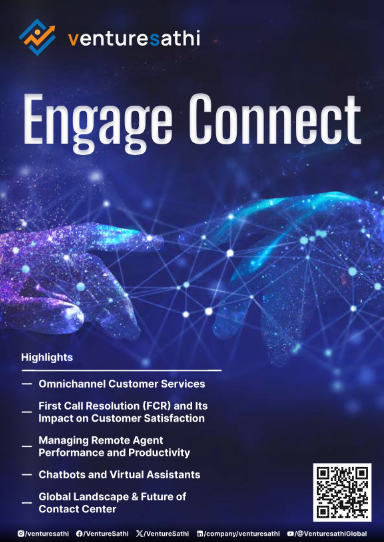Chatbots and Virtual Assistants

Chatbots and virtual agents offer numerous advantages, and as technology advances, their roles in enhancing businesses’ customer service and delivering exceptional CX will continue to expand. However, this doesn’t imply that they will completely replace human agents. Instead, they should be regarded as junior members of the agent team, primarily responsible for handling routine tasks, allowing their human counterparts to concentrate on more high-value interactions.
Consumers are already experiencing the benefits of chatbots and virtual agents. These solutions serve as efficient self-service options available round-the-clock, capable of addressing common inquiries, a feature many consumers find highly valuable. According to a study conducted by Drift, the primary reason people express interest in using a chatbot is to receive quick assistance during emergencies.
One of the key advantages of utilizing chatbots and virtual agents is their rapid response time. Research by Userlike uncovered that 68% of consumers appreciate these solutions for their speedy responses, making it the most favored aspect among consumers regarding chatbots.
Chatbot
A chatbot operates based on preset rules and lacks artificial intelligence capabilities, setting boundaries on its functionality. There are primarily two types of rule-based chatbots:
- Menu-Driven Chatbots: Users navigate these chatbots by selecting from a series of menu options. Ideally, this leads to a satisfactory resolution, such as answering a question. CX-focused brands usually offer an easy path to escalate to a human agent if needed.
- Keyword-Focused Chatbots: These chatbots identify keywords in user input and retrieve relevant responses from a knowledge base. However, they can be less effective if users employ unrecognizable words or if keywords have multiple meanings. Research indicates that 80% of consumers feel chatbots need improvement in terms of intelligence to become regular-use tools.
While chatbots have limitations, they can enhance CX when well-programmed and used appropriately. They excel at handling straightforward tasks, like guiding password resets or gathering customer information. Their effectiveness hinges on how meticulously businesses design and maintain them with a customer-centric approach in mind.
Virtual Assistants
A virtual assistant, powered by artificial intelligence (AI), engages with users through human-like conversation, offering broader capabilities compared to chatbots. When equipped with natural language processing (NLP), virtual assistants improve the customer experience by enabling natural language communication. Users can interact without navigating menus or using specific keywords, akin to conversing with virtual assistants like Siri or Alexa.
Machine learning, a subset of AI, further elevates virtual assistants’ performance by enhancing their intelligence over time. They can discern user intent and predict future queries based on past interactions, providing proactive customer service. To achieve this, virtual assistants require training on extensive datasets, ideally including real past interactions to identify patterns and understand user intentions.
These advanced functionalities make virtual assistants invaluable for tasks like converting online shoppers and verifying callers in contact centers.
Key benefits of chatbots and virtual agents
- Effective Self-Service
When appropriately designed and implemented in the right context, chatbots, and virtual agents empower customers to address their concerns. Modern consumers increasingly prefer resolving issues and finding answers independently. Self-service options, including online knowledge bases and bots, have become more convenient and appealing than engaging with a live agent. A study revealed that one in three consumers would choose to clean a toilet over contacting customer service. Self-service adoption is on the rise, with 95% of businesses reporting year-over-year growth in self-service requests in 2021, averaging a 37% increase. Moreover, 81% of consumers express a desire for more self-service options. Chatbots and virtual agents play an important role in a business’s self-service strategy, offering functionalities such as:
- Providing users with links to the company’s return policy and processes.
- Gathering information about a customer’s issue and seamlessly transferring it, along with the customer, to a live agent.
- Recommending products.
- Supplying pricing information.
- Virtual agents, due to their extended capabilities, can even assist customers in completing transactions, like initiating an insurance claim or activating a new credit card.
- Enhancing the Agent Experience
Chatbots and virtual agents contribute not only to customer satisfaction but also to the enrichment of an agent’s role. Agents often contend with routine tasks that don’t necessarily make for an exciting workday. For instance, guiding customers through product assembly instructions can be monotonous. By delegating tasks like providing instructional videos to bots, agents can allocate their time to more value-added and rewarding responsibilities, such as helping customers troubleshoot issues. This shift can make agents’ roles more fulfilling, fostering higher engagement among contact center staff, which is integral to delivering exceptional customer service and mitigating the common challenge of high agent turnover.
- Reducing Operating Costs
Agent wages constitute the largest cost component in contact centers. Striking a balance between cost containment and ensuring customer satisfaction is a perpetual challenge for most centers operating within budget constraints. Chatbots and virtual agents offer an enticing solution by drastically reducing the cost of service. Gartner estimates that the average self-service transaction costs only $0.10, in contrast to $8.01 for an average agent-assisted interaction. In essence, agent-assisted interactions are approximately 80 times more expensive than self-service transactions. By effectively transitioning a portion of agent-assisted interactions to chatbots or virtual agents, contact centers can achieve substantial cost savings. These savings can then be reinvested in areas like adopting new technologies or enhancing agent compensation, ultimately fortifying operations, and leading to improved customer experiences.

